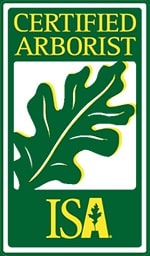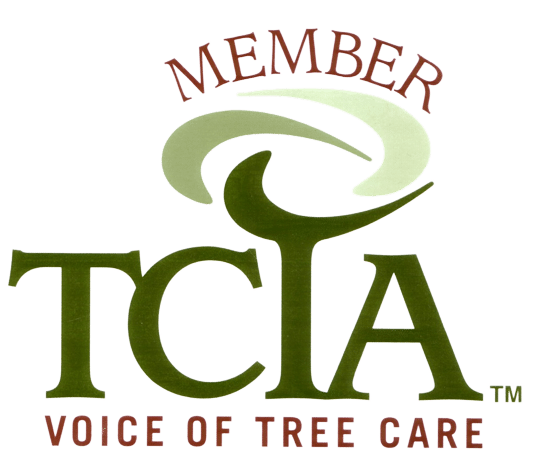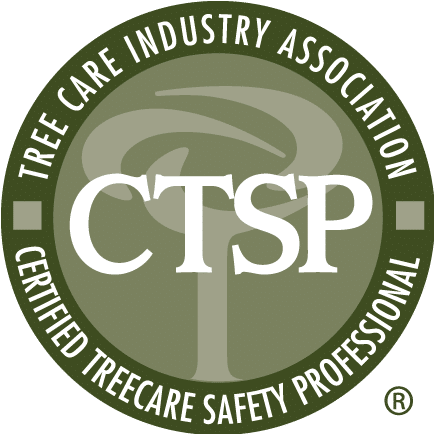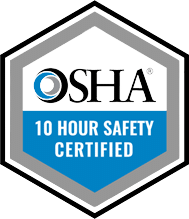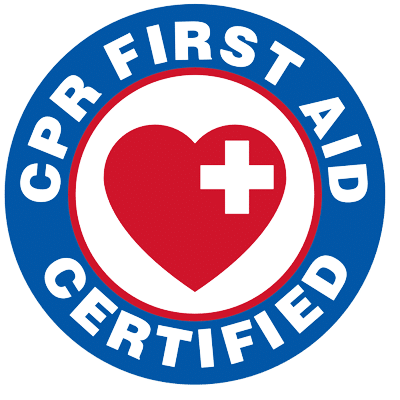Contact Us for Professional Tree Services in Groton.
As a homeowner in Groton, MA, you recognize the importance of maintaining your property, including your trees. Whether you require routine maintenance or emergency services or want to enhance the overall health of your trees, we can assist. At Marquis Tree Service, we offer a full range of tree services to our customers in Groton and the surrounding areas.
Marquis Tree Service has been the go-to tree removal and trimming service for Groton, MA, and New England for over 30 years. Our services include tree pruning, tree removal, stump grinding, and crane service for handling large or hazardous tree removal. Our goal at Marquis Tree Service is to deliver exceptional customer service. We are committed to providing a seamless experience from the initial contact to the final clean-up, focusing on ensuring a safe, friendly, and tidy outcome. Our reputation as a top-notch tree care and removal company in the region has been strengthened since our founding in 1993.
In a tree-related emergency, taking immediate action is crucial to ensure safety and minimize potential damage. Here are the steps to follow:
1. Assess the Situation: First, evaluate the emergency’s severity. Determine if the tree has fallen on a structure, power lines, or a vehicle or poses an immediate risk to people’s safety.
2. Ensure Safety: If the fallen tree is near power lines or has caused any electrical hazards, stay away and contact the local utility company and emergency services immediately. Keep a safe distance until it’s deemed safe.
3. Evacuate if Necessary: If the tree has caused structural damage to your home or poses an immediate threat to your safety, evacuate the area and call 911.
4. Contact a Professional Tree Service: For non-immediate emergencies or situations with no immediate danger, contact a professional tree service with experience in emergency tree removal. Look for a reputable company that offers emergency tree service and can respond promptly.
5. Document the Damage: Take photos or videos of the tree and any damage it has caused. This documentation can be helpful for insurance claims.
6. Communicate Clearly: When you contact the tree service, clearly explain the situation and provide as much detail as possible. Mention any power lines, structures, or obstacles affecting the tree removal process.
7. Request an Estimate: Ask for a free estimate from the tree service. Ensure they provide a fair price for the emergency tree removal.
8. Follow Local Regulations: Be aware of local ordinances or regulations related to tree removal, especially in emergencies. Some areas may require permits or have specific procedures to follow.
9. Wait for Professionals: Once the tree service arrives, follow their instructions and allow them to handle the situation safely and efficiently. Professional tree services have the equipment and expertise for emergency tree removals.
10. Review Their Work: After removing the tree, inspect the work to ensure it meets your expectations and that all debris is cleared from the site.
11. Communicate with Insurance: If the tree has caused damage to your property, contact your insurance company to initiate a claim. Please provide them with the documentation you collected.
12. Prevent Future Emergencies: Consider regular tree maintenance and inspections to identify and address potential hazards before they become emergencies.
Remember that safety is the top priority in tree-related emergencies. It’s crucial to rely on professional tree services with experience in handling such situations to ensure the safe removal of the tree and the protection of your property and well-being.
Pruning is essential for tree care and maintenance for several important purposes. Here’s why pruning is necessary for your trees:
1. Health and Growth: Pruning helps maintain the overall health of your trees by removing dead, diseased, or damaged branches. This promotes healthy growth and prevents the spread of diseases and pests.
2. Safety: Removing weak or overhanging branches reduces the risk of them falling unexpectedly, which can cause damage to property or pose a safety hazard to people and pets.
3. Aesthetics: Proper pruning enhances the appearance of your trees, making them more attractive and well-balanced. This can increase the overall beauty and value of your property.
4. Structural Integrity: Pruning helps shape the tree’s canopy, ensuring branches are well-distributed and balanced. This reduces the risk of branches breaking during storms or heavy winds.
5. Air Circulation: Thinning the canopy through pruning allows for better air circulation and sunlight penetration, essential for the tree’s health.
6. Fruit Production: Pruning can improve fruit production for fruit-bearing trees by redirecting energy to fruit-bearing branches and removing excess growth.
7. Disease Prevention: Pruning removes infected branches, helping prevent disease spread within the tree.
8. Clearance: Trees near buildings, power lines, or other structures may require pruning to maintain a safe clearance. This prevents damage to property and reduces the risk of power outages.
9. Aiding in Recovery: After severe weather events, trees may need pruning to recover and remove damaged branches.
10. Longevity: Properly pruned trees tend to have a longer lifespan because they are healthier and less prone to structural issues.
Determining whether a tree needs to be removed is a critical decision that should be made carefully, as it involves several factors. Here’s how you can assess whether a tree needs to be removed:
1. Health Assessment: Start by evaluating the tree’s overall health. Look for signs of disease, decay, or pest infestations. These can include wilting leaves, dead branches, or visible fungal growth. Removal might be necessary if the tree is in poor health and unlikely to recover.
2. Structural Issues: Inspect the tree for structural problems. Cracks, splits, and cavities in the trunk or major branches can indicate structural weakness. Removal should be considered if these issues compromise the tree’s stability and pose a danger.
3. Leaning or Uprooting: If the tree is leaning significantly or has partially uprooted due to strong winds or other factors, it can be a safety hazard and must be removed.
4. Proximity to Structures: Trees that are too close to buildings, power lines, or other structures can pose a risk if they fall during storms. Removal may be the safest option if pruning to maintain clearance isn’t possible.
5. Root Issues: Consider the condition of the tree’s root system. If the roots are damaged or cut, it can affect the tree’s stability and health. Trees with extensive root damage may need to be removed.
6. Dead or Dying Trees: Dead trees or trees in advanced stages of decline are more likely to drop branches or fall over. Removing them proactively can prevent accidents and property damage.
7. Pests and Diseases: Trees severely infested with pests or infected by diseases may not respond to treatment. Removing them can prevent the spread of the problem to nearby trees.
8. Safety Concerns: Evaluate whether the tree poses a safety risk to people, property, or vehicles. If there’s a significant danger, removal is often the best solution.
9. Tree Size: Large trees near structures or confined spaces may present a higher risk if they fall. Their size can make them more challenging to manage, and removal might be necessary for safety reasons.
10. Consulting an Arborist: When in doubt, it’s advisable to consult a certified arborist or tree service professional. They can assess the tree’s condition, offer expert advice, and recommend the appropriate course of action, whether pruning, treatment, or removal.
In all cases, safety should be a top priority when removing a tree. It’s essential to hire a professional tree removal service, as they have the expertise and equipment to safely and efficiently remove trees while minimizing potential risks to people and property.
With 30 years of experience and a commitment to client satisfaction, Marquis Tree Service proudly offers the best tree care services in Groton, MA.
We offer the following services: tree removal, tree pruning, stump grinding, crane-assisted tree removal, land clearing, and emergency tree services.
We are ISA (Certified Arborist), MAA (Massachusetts Arborists Association), Member of TCTA (Voice of Tree Care), CTSP (Tree Care Industry Association), HSHA Certified, and EHAP (Electrical Hazards Awareness Program).
Tree trimming and tree pruning are distinct practices that serve different purposes in maintaining tree health and aesthetics. Tree trimming typically involves the removal of overgrown or unwanted branches to shape the tree’s canopy, improve its appearance, and clear away any obstructive growth. This process focuses on maintaining the tree’s size and overall shape, enhancing its aesthetic appeal, and promoting healthy growth. On the other hand, tree pruning is a more selective process that targets specific branches to enhance the tree’s health, structure, and growth patterns. Pruning removes dead, diseased, or damaged branches, promotes proper branch spacing, and encourages new growth. Both tree trimming and pruning are essential components of tree care and should be performed by professionals to ensure the tree’s well-being.
The timing for trimming trees in Groton, Massachusetts, depends on several factors such as the species of the tree, its growth rate, and the specific objectives of the trimming. In general, it’s advisable to schedule tree trimming during the dormant season, typically in late winter or early spring, before new growth begins. Trimming during this time helps promote healthy growth and minimizes stress on the tree. Additionally, trimming during the dormant season allows for better visibility of the tree’s structure and facilitates pruning decisions. However, certain trees may require trimming at different times of the year based on their growth patterns and specific needs. Consulting with a professional tree service in Groton can help determine the optimal timing for trimming your trees.
The duration required to trim a tree in Groton, Massachusetts, can vary depending on factors such as the size and species of the tree, its condition, and the extent of trimming needed. On average, tree trimming can take anywhere from a few hours to a full day or more to complete, depending on the complexity of the job. Larger trees or those with extensive overgrowth may require more time and manpower to trim effectively. Additionally, factors such as access to the tree, presence of obstacles, and weather conditions can also influence the duration of the trimming process. It’s advisable to consult with a professional tree service in Groton to assess the specific requirements of your tree trimming project and obtain an accurate estimate of the time needed.
Professional tree trimming costs in Groton, Massachusetts, can vary depending on factors such as the size and species of the tree, its location, and the extent of trimming required. On average, tree trimming services may range from $250 to $1,000 or more per tree. Larger trees, difficult access, and additional services such as debris removal or cleanup can increase the overall cost. It’s recommended to obtain estimates from multiple tree trimming services in Groton to compare prices and services offered. Additionally, consider factors such as the company’s reputation, experience, and insurance coverage when selecting a tree trimming service provider.
Pruning is necessary for maintaining the health and appearance of trees in Groton, MA. Regular pruning helps remove dead, diseased, or damaged branches, promotes proper branch spacing, and encourages new growth. Pruning also helps improve air circulation and sunlight penetration within the tree canopy, reducing the risk of fungal diseases and promoting overall tree health. Additionally, pruning can enhance the tree’s structural integrity and reduce the risk of branch failure or storm damage. Consulting with a professional tree service in Groton can help determine the specific pruning needs of your trees and ensure they receive proper care and maintenance.
The cost of removing a fallen tree near your house in Groton, Massachusetts, can vary depending on factors such as the size, species, and condition of the tree, its location, and any obstacles or hazards involved in the removal process. On average, tree removal costs may range from $500 to $2,000 or more per tree. Larger trees, difficult access, and additional services such as stump removal can increase the overall cost. It’s recommended to obtain estimates from multiple tree removal companies in Groton to compare prices and services offered. Additionally, consider factors such as the company’s reputation, experience, and insurance coverage when selecting a tree removal service provider.
When lightning strikes a tree in Groton, Massachusetts, it can cause significant damage and pose various risks to the tree, nearby structures, and people. The intense heat generated by the lightning bolt can vaporize moisture within the tree, leading to explosive expansion and rupturing of the trunk or branches. This can result in the splitting or shattering of the tree, causing extensive structural damage and potential collapse. Additionally, the electrical current from the lightning strike can travel through the tree’s vascular system, damaging internal tissues and disrupting vital functions such as water and nutrient transport. Lightning strikes can also ignite fires within the tree or nearby vegetation, posing a risk of wildfire. After a lightning strike, it’s crucial to inspect the affected tree for signs of damage and assess any safety hazards it may present. Consulting with a professional tree service in Groton is advisable to evaluate the tree’s condition, mitigate risks, and determine the appropriate course of action.
The best time of year for tree service in Groton, Massachusetts, depends on the specific needs of your trees and the services required. In general, the dormant season, typically in late winter or early spring, is considered an ideal time for tree service activities such as pruning, trimming, and removal. During the dormant season, trees are less actively growing, making it easier to assess their structure and health and perform necessary maintenance tasks. Additionally, dormant season tree service helps promote healthy growth, reduces the risk of disease transmission, and minimizes stress on the trees. However, certain tree service tasks may be performed at different times of the year based on factors such as tree species, weather conditions, and specific objectives. Consulting with a professional tree service in Groton can help determine the optimal timing for your tree service needs and ensure your trees receive the care they require for optimal health and vitality.
Tree removal is the process of taking down a tree, including the root system, and removing it from the property. This service is typically required when a tree is dead, diseased, or poses a safety hazard.
Tree pruning is the process of removing dead, diseased, or overgrown branches from a tree in order to improve its health, appearance, and safety.
Stump grinding is the process of using specialized equipment to grind a tree stump down to below ground level. This is typically done after a tree has been removed in order to remove the remaining stump and make the area safer and more attractive.
Crane assisted tree removal is a method of removing a tree using a crane in conjunction with other specialized equipment. This method is typically used for larger trees that cannot be safely taken down using conventional methods, or for trees that are located in difficult-to-reach areas.
Land clearing service involves the removal of trees, brush, and other vegetation from a plot of land. This service is typically used for new construction, agriculture, or to create firebreaks. It may also include the removal of stumps, rocks, and other debris to prepare the land for further use.
Emergency tree services are critical when a fallen tree threatens your home or property, or poses a safety risk. Our team is available 24/7 to handle any tree-related emergency, including fallen or damaged trees, storm damage, or hazardous trees. We have the experience, tools, and expertise to assess the situation.
Tree and shrub health care is a specialized service focused on the diagnosis, treatment, and prevention of diseases and pest infestations that affect woody plants in residential and commercial landscapes. This comprehensive approach includes soil analysis, targeted fertilization, preventative treatments, and ongoing monitoring to maintain plant vigor, extend longevity, and preserve the aesthetic and ecological value of trees and shrubs.
GIVE US A CALL TODAY!






